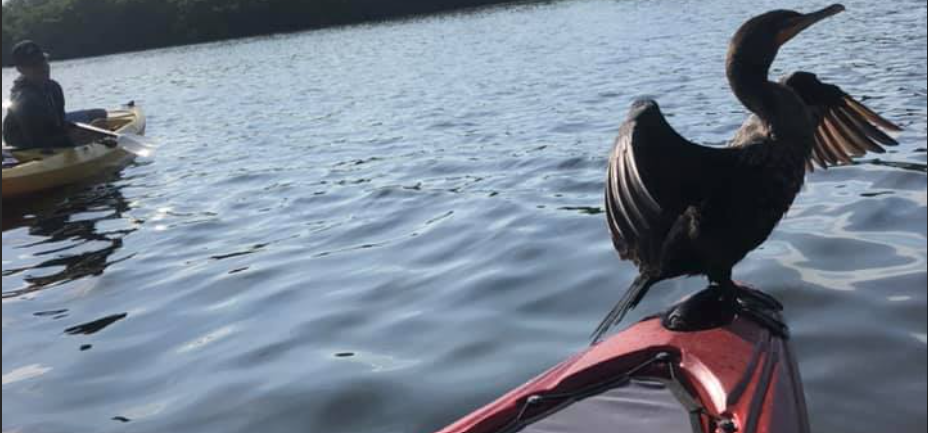The Distinctive Habits of the Common Cormorant

Whether standing sentry-still with outstretched wings or diving torpedo-style for fish, cormorants have numerous unique habits. Today, around 40 cormorant species span Australia, Asia, Europe, Africa, and North America, readily identified by their slender necks and bodies with signature hooked beaks. On the Gulf coast of Florida, you will see the Double-crested Cormorant, a large black waterbird with orange facial skin and two small, wispy crests on the top of the adult’s head during the breeding season.
Before dawn, you will hear the throaty guttural cacophony of cormorant chatter. You will see males as they return from nightly sojourns to reclaim prime nesting spots from would-be squatters. There is often frenzied competition between males touting desirable sticks or other nest materials to win over females. Successful suitors deliver their gifts with flourishing head bobs and elaborate preening only to have their mate fling it to the ground, unimpressed. But persistence pays off for the most resolute male cormorants vying to pass on their genes.
What you will see kayaking Little Sarasota Bay
On our guided kayak tours of Little Sarasota Bay, you will often see a cormorant with its signature outstretched wing posture after an early plunge for fish. With wings extended but barely flapping, cormorants face skyward or sideways, holding form for sometimes an hour or more. While often misinterpreted as drying their wings, research reveals that they are actually regulating their body temperature. Spreading extensive networks of underlying blood vessels dissipates excess body heat absorbed during their pursuit of prey underwater. So, with hot fish dinners simmering inside their bellies, cormorants strike their familiarly curious pose until equilibrium is restored, and they dive back for second helpings.
The hunting prowess of these expert avian anglers inspires admiration. Coasting high on thermals, cormorants sight prey below, plunging steep and fast to depths exceeding 150 feet. Powerful feet propel their lightning-quick chase as cormorants zip after fish with missile-like accuracy. Upon surfacing after an extensive dive – they pause briefly with just eyes and beaks above water, scanning below for predators before exposing more of their black bodies marked by glistening beads of seawater.
Cormorant parenting
As successful cormorant parents alternate nest duties once eggs hatch in late Spring, unique family dynamics become apparent as chicks grow. Parent birds continuously shuttle back from the sea with throat pouches overflowing with fish for their excited offspring. The chicks lift their bright orange beaks to accept regurgitated meals from the cormorant parents. Chicks hiss, screech, and flail their wings to compete with siblings for their fill. But with round-the-clock parental food runs, most fledglings thrive.
Cormorant’s resilience is admirable. Curious, comical, or even crass as they appear on the surface, a deeper dive into understanding cormorant behavior uncovers an intricate web of specialized biology and family bonds on par with the most celebrated species. If you want to see cormorants up close, come kayak with us on Little Sarasota Bay – they often follow our kayaks and swim under and around us. Book your tour here.
